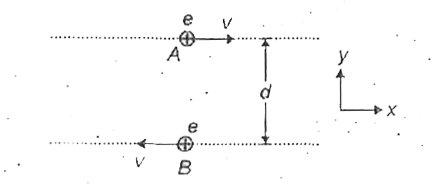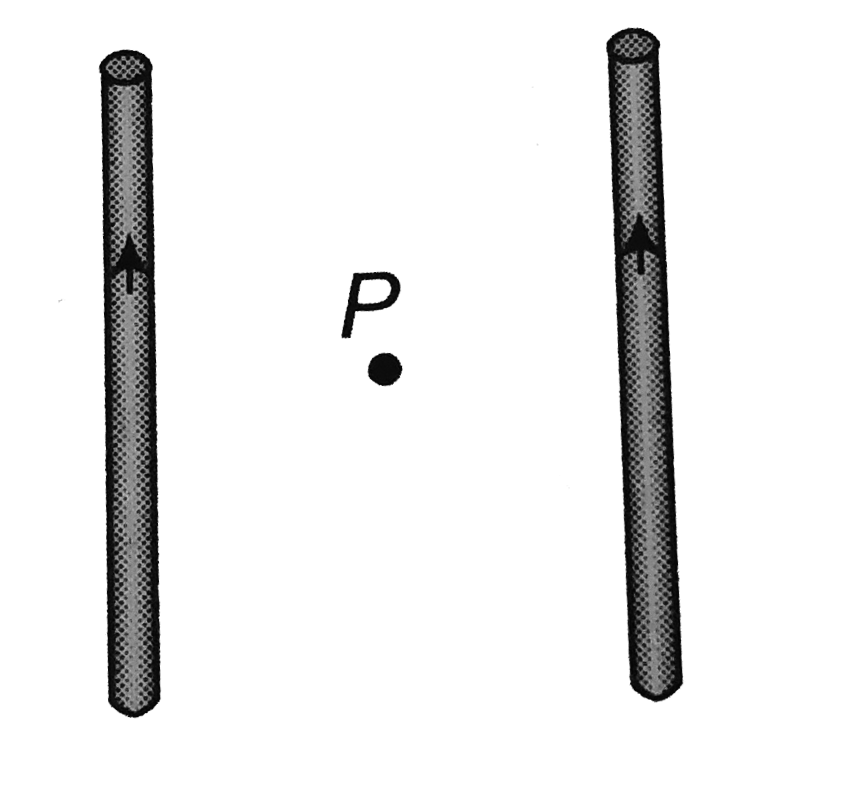If two steams of proton move parallel to each other in the same direction, then they
Do not exert any force on each other
Repel each other
Attract each other
Get rotated to be perpendicular to each other
The correct Answer is:B
To solve the question, we need to analyze the situation of two streams of protons moving parallel to each other in the same direction. Here’s a step-by-step breakdown of the reasoning:
Step 1: Identify the nature of the particles
- Protons are positively charged particles. Since both streams consist of protons, they both carry the same type of charge.
Hint: Remember that like charges repel each other due to electrostatic forces.
Step 2: Determine the forces acting between the streams
- When charged particles move, they create electric and magnetic fields around them. However, in this case, we are primarily concerned with the electrostatic and magnetic forces.
Hint: Consider the fundamental interactions between charged particles: electrostatic and magnetic forces.
Step 3: Analyze the electrostatic force
- The electrostatic force between two like charges (in this case, protons) is repulsive. This means that as both streams of protons are positively charged and moving parallel to each other, they will exert a repulsive force on each other.
Hint: Use Coulomb's law to recall that the force between two like charges is repulsive.
Step 4: Consider the magnetic forces
- While moving charges do create magnetic fields, the magnetic force between two parallel moving charges can be more complex. However, in this scenario, the dominant force is the electrostatic repulsion.
Hint: Remember that the magnetic force is generally weaker than the electrostatic force in this context.
Step 5: Conclude the interaction
- Since the electrostatic force is dominant and repulsive, the conclusion is that the two streams of protons will repel each other.
Hint: Summarize the findings: two streams of like charges moving parallel will repel each other.
Final Answer:
The two streams of protons moving parallel to each other in the same direction will repel each other.
- Protons are positively charged particles. Since both streams consist of protons, they both carry the same type of charge.
- When charged particles move, they create electric and magnetic fields around them. However, in this case, we are primarily concerned with the electrostatic and magnetic forces.
- The electrostatic force between two like charges (in this case, protons) is repulsive. This means that as both streams of protons are positively charged and moving parallel to each other, they will exert a repulsive force on each other.
- While moving charges do create magnetic fields, the magnetic force between two parallel moving charges can be more complex. However, in this scenario, the dominant force is the electrostatic repulsion.
- Since the electrostatic force is dominant and repulsive, the conclusion is that the two streams of protons will repel each other.
The two streams of protons moving parallel to each other in the same direction will repel each other.
Topper's Solved these Questions
- MOVING CHARGES & MAGNETISM BOOK - VMC MODULES ENGLISHCHAPTER - MOVING CHARGES & MAGNETISM EXERCISE - ENABLE
50 Videos
- MOVING CHARGES & MAGNETISM BOOK - VMC MODULES ENGLISHCHAPTER - MOVING CHARGES & MAGNETISM EXERCISE - EFFICIENT
50 Videos
- Motion in Two DimensionsBOOK - VMC MODULES ENGLISHCHAPTER - Motion in Two DimensionsEXERCISE - MCQ
2 Videos
- PROPERTIES OF MATTERBOOK - VMC MODULES ENGLISHCHAPTER - PROPERTIES OF MATTEREXERCISE - JEE Advanced (Archive) Level - 2 (MATRIX MATCH TYPE)
1 Videos
Similar Questions
(A) : If two beams of protons move parallel to each other in same direction then these beams repel each other.
(R) : Like charges repel while opposite charges attract each other.
View SolutionTwo streams of electrons are moving parallel to each other in the same direction. They
View SolutionStatement-1 Two parallel wire carrying current in same direction attract each other, whereas two proton beams moving parallel to each other repel each other
Statement-2 Wire carrying current is electrically neutral, therefore it is experiencing only magnetic attraction while the electric force of repulsionn between protons is more than the magnetic attraction
View SolutionTwo long straight wires are set parallel to each other Each carries a current i in the same direction and the separation between them is 2r. The intensity of the magnetic field midway between them is
View SolutionTwo protons move parallel to each other with an equal velocity v=300kms−1. Find the ratio of forces of magnetic and electric interaction of the protons.
View SolutionTwo parallel beams of positrons moving in the same direction will
View SolutionTwo parallel beams of positrons moving in the same direction will
View SolutionTwo protons A and B move parallel to the x-axis is opposite directions with equal speed v. At the instant shown, the ratio of magnetic force and electric force acting on the proton A is (c=speed of light in vacuum)

View SolutionTwo long straight wires are set parallel to each other. Each carriers a current i in the same direction and the separation between them is 2r. The intensity of the magnetic field midway between them is

View SolutionTwo electrons move parallel to each other with equal speed 'V' the ratio of magnetic & electric force between them is
View Solution
